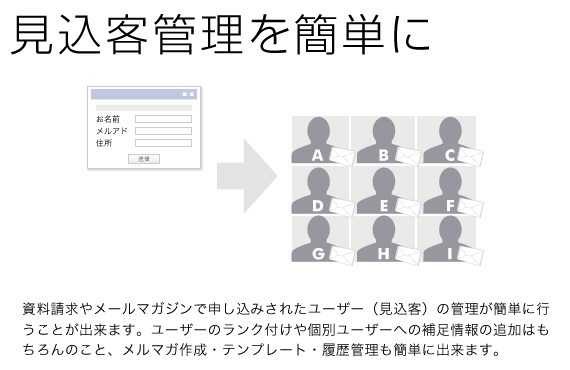The contribution margin ratio is most useful when a business wants to assess how efficiently it can cover fixed costs and generate profit from sales. It is especially valuable for evaluating the impact of changes in sales volume on overall profitability. This ratio is commonly used in break-even analysis, pricing decisions, and forecasting. When launching a new product, managing costs, or analyzing performance across products or departments, the ratio helps to determine which offerings are most profitable.
Total Cost
In short, it is the proportion of revenue left over after paying for variable costs. You need to calculate the contribution margin to understand whether your business can cover its fixed cost. Also, it is important to calculate the contribution margin to know the price at which you need to sell your goods and services to earn profits. The first step to calculate the contribution margin is to determine the net sales of your business. Net sales refer to the total revenue your business generates as a result of selling its goods or services.
During downturns, companies may explore reducing fixed costs or increasing the contribution margin ratio through points, lines and curves cost-cutting to lower the break-even point. Accurate and transparent analyses, aligned with accounting standards like IFRS or GAAP, build stakeholder confidence in the company’s financial health. The contribution margin ratio is pivotal in break-even analysis, which determines the sales volume needed to cover all costs.
How to calculate the contribution margin ratio
Accordingly, you need to fill in the actual units of goods sold for a particular period in the past. However, you need to fill in the forecasted units of goods to be sold in a specific future period. This is if you need to evaluate your company’s future performance. This means Dobson books company would either have to reduce its fixed expenses by $30,000. On the other hand, net sales revenue refers to the total receipts from the sale of goods and services after deducting sales return and allowances. Variable Costs depend on the amount of production that your business generates.
- Expressed as a percentage, it provides a clear view of product or service profitability.
- For example, analysts can calculate the margin per unit sold and use forecast estimates for the upcoming year to calculate the forecasted profit of the company.
- Therefore, the contribution margin ratio is 70% (the contribution margin per unit of $14 divided by the selling price of $20).
- The company will use this “margin” to cover fixed expenses and hopefully to provide a profit.
- The contribution margin represents how much revenue remains after all variable costs have been paid.
According to Harvard Business Publishing, one of the trickiest parts of calculating this ratio is accurately distinguishing between fixed and variable costs. The more precise you are in this step, the clearer your contribution margin and overall profitability will be. As mentioned above, the contribution margin is nothing but the sales revenue minus total variable costs. book value vs. market value Thus, the following structure of the contribution margin income statement will help you to understand the contribution margin formula. The contribution margin ratio is a financial metric that represents the proportion of sales revenue that exceeds variable costs.
Then identify the fixed costs related to those products, and calculate the ratio. Profit margin is calculated using all expenses that directly go into producing the product. The contribution margin shows how much additional revenue is generated by making each additional unit of a product after the company has reached the breakeven point. In other words, it measures how much money each additional sale “contributes” to the company’s total profits.
More Resources
The contribution margin ratio is calculated by dividing the contribution margin by the selling price of the product. This ratio represents the portion of each sale that contributes to covering the fixed costs of the business, and ultimately, generating profit. By knowing the contribution margin ratio, businesses can determine how much of the sales price is going towards covering variable costs and how much is contributing to profit. The selling price significantly impacts the contribution margin ratio. A higher price with stable variable costs increases the ratio, as additional revenue directly contributes to fixed costs and profit.
- Using the provided data above, we can calculate the price per unit by dividing the total product revenue by the number of products sold.
- Thus, the contribution margin ratio expresses the relationship between the change in your sales volume and profit.
- For instance, if you’re trying to increase profits, the main options are to increase prices, lower costs, or shift focus to different types of sales.
This calculation reveals the sales target where total capital employed formula calculation and examples revenues equal total costs, resulting in neither profit nor loss. Variable costs, such as materials and labor, fluctuate with production or sales volume. Reducing these costs increases the ratio and improves profitability.
Whether you’re tweaking costs or deciding which products deserve your attention, understanding your contribution margin lets you make sharper, faster calls. It’s one of those concepts that sounds technical but becomes practical the moment you apply it. Whether you’re selling a product or offering a service, this concept helps you see how much money is left after covering variable costs.
Look for systems that can handle multi-location businesses, track costs by product line, and integrate with your inventory management. The goal is real-time visibility into your margins without manual data entry. Your contribution margin numbers become powerful when you start comparing different products or services. But you can’t just look at the dollar amount per unit—you need to consider the bigger picture. Try plugging your own numbers into a Contribution Margin Calculator and see where you land. Even if your product sells well, a low contribution margin can choke your profits.
What contribution margin tells about your business
Products with higher margins are generally more financially advantageous, even if sales volume isn’t that high. Contribution margin is a business’s sales revenue less its variable costs. The resulting contribution dollars can be used to cover fixed costs (such as rent), and once those are covered, any excess is considered earnings. Contribution margin (presented as a % or in absolute dollars) can be presented as the total amount, amount for each product line, amount per unit, or as a ratio or percentage of net sales. Contribution margin ratio is a calculation of how much revenue your business generates from selling its products or services, once the variable costs involved in producing and delivering them are paid.
Understanding how each product, good, or service contributes to the organization’s profitability allows managers to make decisions such as which product lines they should expand or which might be discontinued. When allocating scarce resources, the contribution margin will help them focus on those products or services with the highest margin, thereby maximizing profits. To calculate the contribution margin, we must deduct the variable cost per unit from the price per unit. The fixed costs of $10 million are not included in the formula, however, it is important to make sure the CM dollars are greater than the fixed costs, otherwise, the company is not profitable.
Suppose Company A has the following income statement with revenue of 100,000, variable costs of 35,000, and fixed costs of 20,000. That is, fixed costs remain unaffected even if there is no production during a particular period. Fixed costs are used in the break even analysis to determine the price and the level of production. Contribution margin is used to plan the overall cost and selling price for your products. Further, it also helps in determining profit generated through selling your products.
Accordingly, these costs increase with the increase in the level of your production and vice-versa. As you can see, the net profit has increased from $1.50 to $6.50 when the packets sold increased from 1000 to 2000. However, the contribution margin for selling 2000 packets of whole wheat bread would be as follows. Thus, you need to make sure that the contribution margin covers your fixed cost and the target income you want to achieve.








